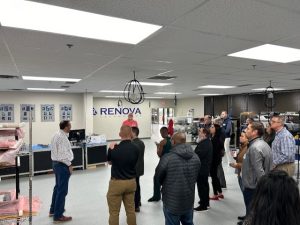Here are 5 considerations manufacturers can take into account:
1.) Circuit Board Repair
With the rise in container ship costs and delays, many manufacturers are thinking outside the box. They are looking for ways to get needed equipment to their customers and field service organizations. The shortage of integrated circuit chips (IC chips) is having a profound effect across most industries- from automotive to surveillance equipment. Repair is a strategic alternative that can help in the interim.
2.) Identify Aftermarket Service Providers
Do you have the internal resources to repair? For Renova Technology, most of our manufacturer customers have their own internal repair teams. But many have become overloaded. We simply help out on the complex often proprietary parts.
So where do aftermarket services providers fit?
One way that manufacturers (OEMs) can overcome delay in new product is to focus on “aftermarket” support. After all, aftermarket providers have the skill set and knowledge to support volume-based repair.
In addition, OEMs core capabilities is set on production, whereas aftermarket service providers operate behind the scenes- repairing equipment and handling forward/reverse logistics.
3.) Transparency is Requisite
End-users and integrators want to know why there is a delay in product. Is it due to freight, delay in CM? Transparency is key. Communicating where devices are and when they will be delivered will strengthen your customer relationships.
Customers can only speculate that their product is not getting the urgent attention when sent back on a RMA (request merchandise authorization) to the OEM.
Aftermarket service providers already handle warranty RMA processes. We recommend shifting to their service-based model – and ensuring that the aftermarket service provider to provide as much data as possible about the repair process.
For example: is it an NFF (no fault found?) Is the service provider waiting for the same parts you are? With this information one is able to develop a more predictive model regarding repair requirements, expected lead time, and develop proactive processes that reduce the need for repair or rework.
4.) Shift to Service Model
A great example of OEMs shifting to “Service” comes from a Deloitte Insights article, “Transforming manufacturing in the wake of the COVID-19 pandemic”. The authors point out that “Manufacturers are increasingly turning their focus on aftermarket services, not only as a means to enhance customer satisfaction but also as a revenue-generating opportunity.” The article collects data from some 35 OEM’s and Industry Specialists.
5.) Set a Goal
Are you ready to get started with an aftermarket provider?
First, identify the products that get sent back for repair frequently and everything you can about them: geographical origin, nature of failures, parts requirements, etc.
Second, set reasonable goals that can be accomplished. For example, are you looking to reduce lead time, uncover the failure, or reduce transportation costs?
Aftermarket providers can help answer these questions and help you identify those objectives, and help you drive to attain them.




